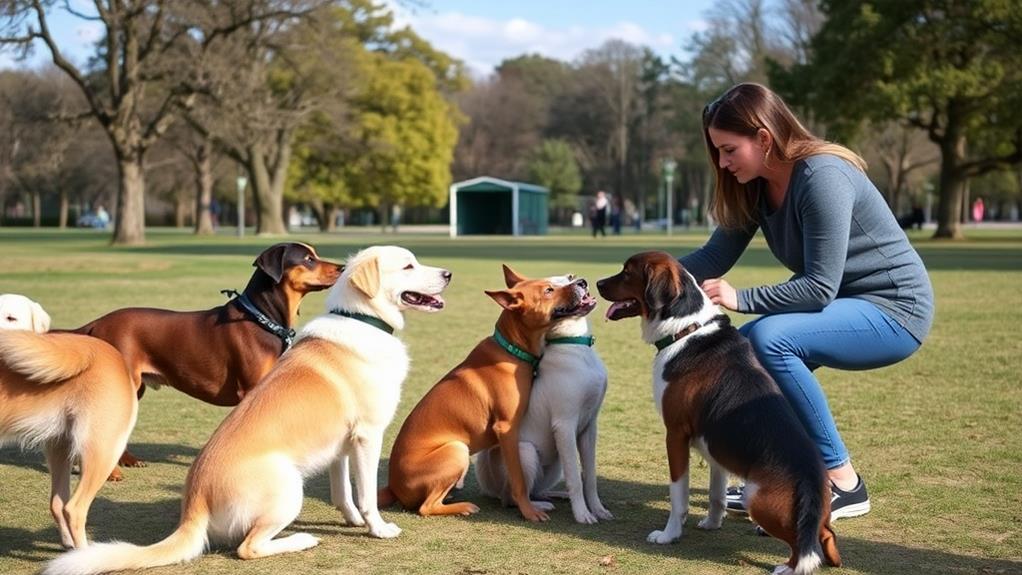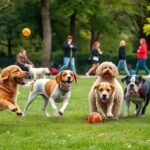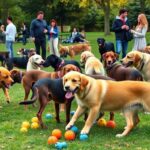To effectively socialize your aggressive dog, start by understanding their triggers like fear or territoriality. Use gradual exposure techniques, introducing social situations at a distance where your dog feels calm. Monitor their body language closely and reward positive behavior with treats or praise. Controlled socialization sessions with well-mannered dogs can help, ensuring a safe environment. It's also beneficial to seek professional guidance for personalized techniques and insight into canine body language. With patience and consistency, you'll see progress in your dog's social skills and overall behavior. Keep looking for more tips to enhance your training journey!
Understanding Aggression Triggers
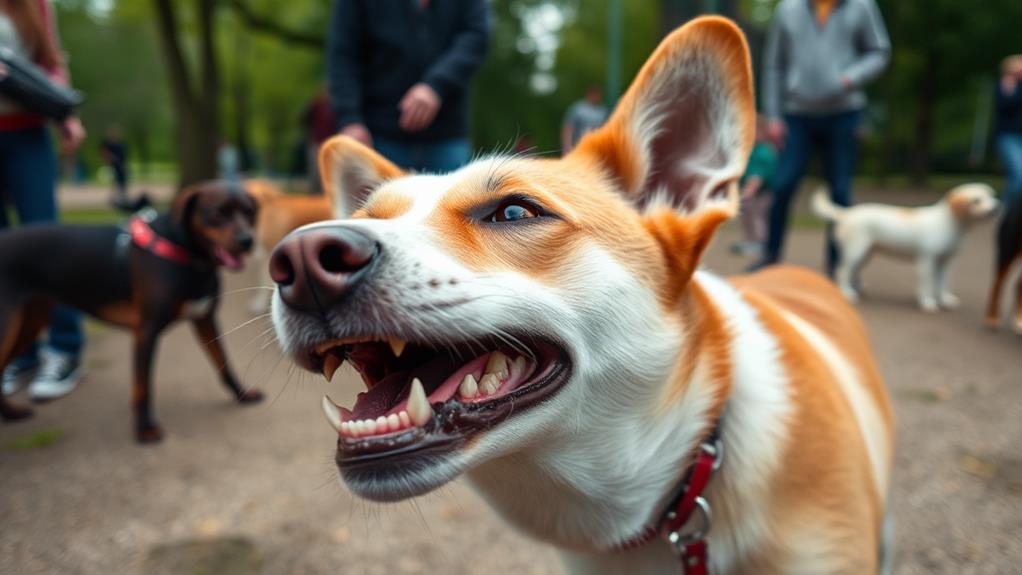
Recognizing the signs of aggression in dogs starts with understanding what triggers their behavior. You'll want to observe your dog closely to identify specific situations or stimuli that provoke aggression. Common triggers include fear, territoriality, and resource guarding. For instance, if your dog growls when someone approaches their food bowl, this signals a need to protect their resources.
Pay attention to your dog's body language as well. Ears pinned back, a stiff body, and a raised hackle often indicate discomfort or aggression brewing. Also, note environmental factors like loud noises or crowded spaces that may heighten anxiety levels.
Understanding these triggers helps you create a safer environment for your dog and others. It's important to remember that aggression doesn't always mean your dog is dangerous; it can often stem from fear or anxiety. By identifying these triggers, you can better prepare for situations that may escalate aggression.
This awareness enables you to manage interactions more effectively, ensuring a calmer experience for both you and your dog. Recognizing these signs is the first step toward fostering a more socially adept pet and improving their overall well-being.
Gradual Exposure Techniques
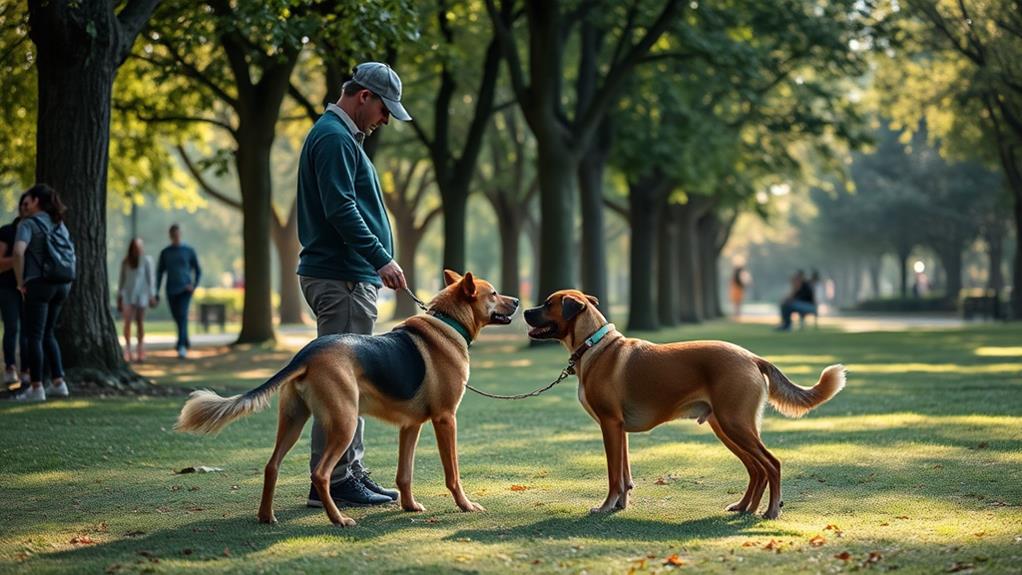
Once you've identified your dog's aggression triggers, you can begin implementing gradual exposure techniques to help them feel more comfortable in various situations. Start by introducing your dog to the trigger at a distance where they remain calm. For instance, if your dog reacts to other dogs, have them observe from afar during your walks.
Slowly decrease the distance over time, but only if your dog stays relaxed. If they show signs of stress, step back to the previous distance until they regain their composure. Remember, it's vital to work at your dog's pace; rushing this process can worsen their anxiety.
Incorporate short, positive sessions to expose your dog to the triggers. For example, if they're anxious around strangers, have friends approach gradually, allowing your dog to get accustomed to their presence. Maintain a controlled environment by using leashes and muzzles if necessary for safety.
Keep your sessions brief and end on a positive note. This method allows your dog to build confidence over time, making them feel more secure in the presence of their triggers. Consistency and patience are key to successful gradual exposure.
Positive Reinforcement Strategies
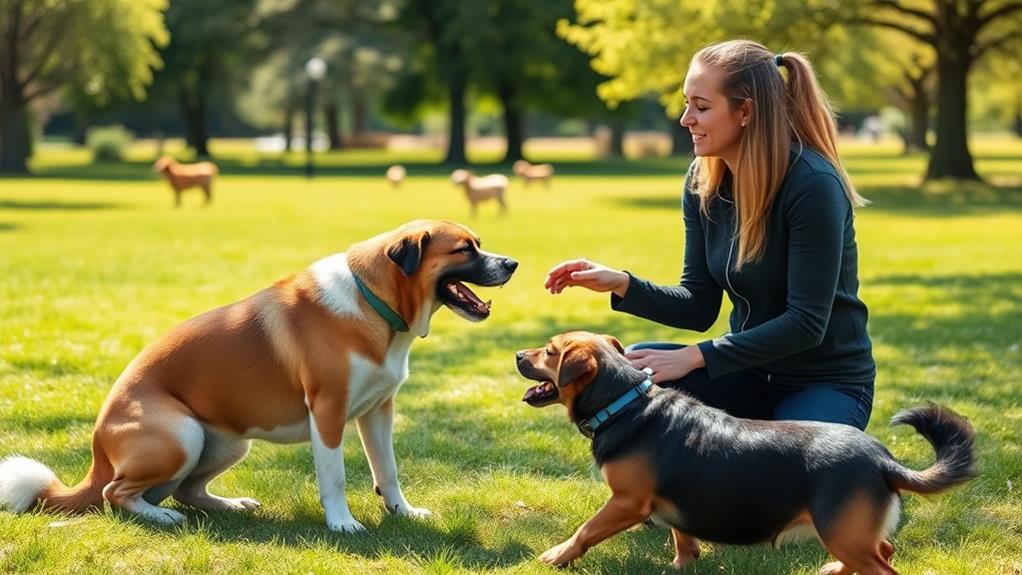
Positive reinforcement is a powerful tool for training aggressive dogs, as it encourages desirable behaviors while fostering a trusting bond between you and your pet. Start by identifying the behaviors you want to encourage, like calmness around other dogs or people. Whenever your dog exhibits these behaviors, immediately reward them with treats, praise, or playtime. This creates a positive association, making it more likely they'll repeat those actions.
It's indispensable to be consistent with your rewards. If your dog reacts positively to a situation, reward them every time. This consistency helps reinforce the behavior in their mind. Additionally, keep training sessions short and engaging; dogs can lose focus if they're too long. Try to incorporate training into daily routines, rewarding your dog for good behavior during walks or when meeting new people.
Avoid punishing your dog for aggressive behavior, as this can increase anxiety and distrust. Instead, redirect their focus and reward them for calmness. Over time, your dog will learn to associate positive experiences with previously stressful situations, making them more comfortable and less aggressive. Remember, patience and persistence are key to successful socialization through positive reinforcement.
Controlled Socialization Sessions
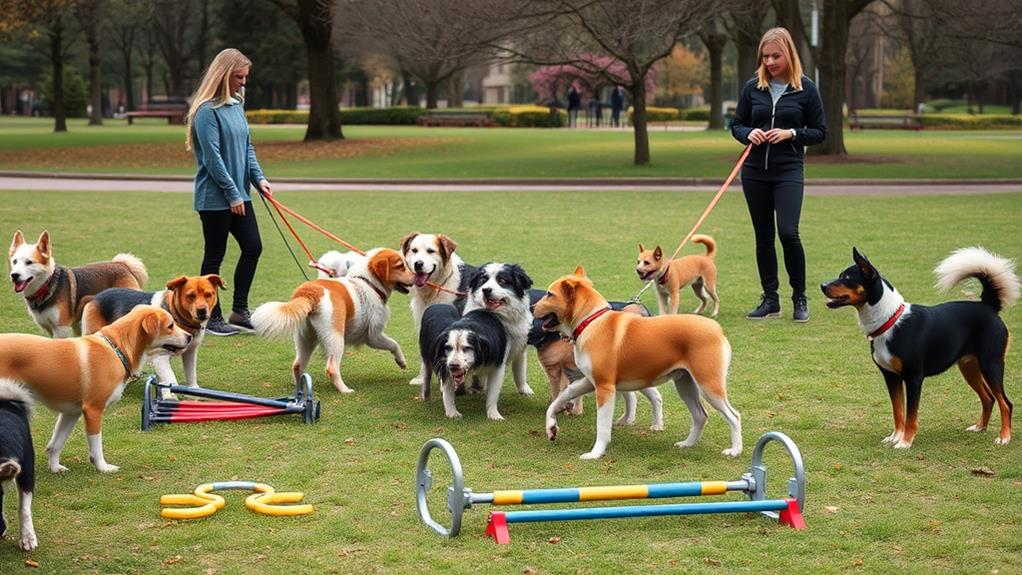
Controlled socialization sessions are essential for helping aggressive dogs learn to interact positively with others. These structured environments allow your dog to meet other dogs and people gradually, minimizing stress and potential triggers. By carefully selecting the right setting and participants, you can create safe opportunities for your dog to practice social skills.
When organizing these sessions, keep the following key points in mind:
- Choose calm, well-socialized dogs: Select dogs that are known to be friendly and tolerant, helping your dog feel more at ease.
- Limit exposure time: Start with short sessions to prevent overwhelming your dog. Gradually increase the duration as they become more comfortable.
- Use positive reinforcement: Reward your dog for calm behavior during interactions, reinforcing desirable actions and creating a positive association with socialization.
Professional Guidance and Support
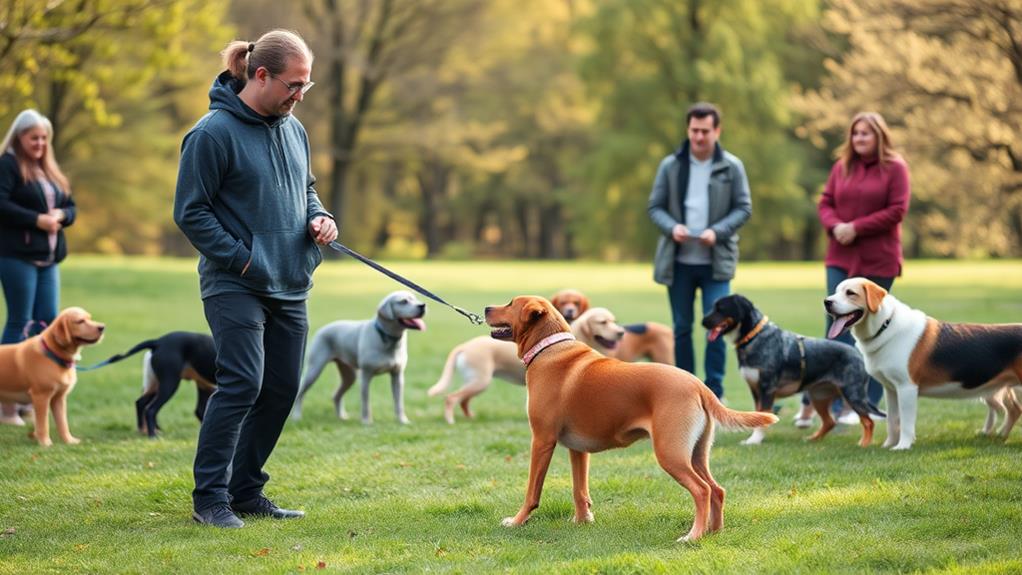
When dealing with aggressive dogs, seeking professional guidance can greatly enhance your efforts in socialization. A trainer experienced in aggressive behaviors can offer personalized strategies tailored to your dog's specific needs. They'll help you identify triggers and develop effective coping techniques, guaranteeing you manage situations safely.
Group classes led by professionals can also provide a controlled environment for socialization. Here, your dog will interact with others under expert supervision, allowing you to learn how to navigate various encounters. You'll gain insights into body language and appropriate reactions, which are vital for preventing escalation.
Additionally, a trainer can teach you essential commands that can divert your dog's attention during stressful situations. This can build your confidence and improve your handling skills. Regular check-ins with a professional confirm that you're on the right track, making adjustments as needed based on your dog's progress.
Frequently Asked Questions
How Long Does Socialization Typically Take for Aggressive Dogs?
Socialization for aggressive dogs varies widely, but you should expect a process that takes weeks to months. Consistency, patience, and gradual exposure to various environments are key to achieving positive outcomes in their behavior.
Can Aggressive Behavior Be Completely Eliminated Through Socialization?
It's unlikely aggressive behavior can be completely eliminated through socialization alone. However, you can markedly reduce its intensity and frequency with consistent training, positive experiences, and patience, helping your dog become more relaxed and confident.
What Signs Indicate My Dog Is Stressed During Socialization?
During socialization, watch for signs like excessive barking, tail tucking, yawning, or lip licking. If your dog's body language seems tense or they try to avoid others, they're likely feeling stressed.
Are There Specific Breeds More Prone to Aggression?
Oh sure, let's just blame the breeds! While some breeds might show more tendencies, aggression can stem from environment and upbringing. Focus on your dog's individual behavior rather than stereotypes, and you'll be better equipped.
Can Socialization Be Effective for Older Aggressive Dogs?
Yes, socialization can be effective for older aggressive dogs. By gradually exposing them to new experiences, people, and other pets in a controlled manner, you can help them learn appropriate behaviors and reduce aggressive tendencies.
Conclusion
Socializing an aggressive dog might seem formidable, but with patience and the right techniques, you can make significant progress. Remember, every dog is unique, and it's normal to encounter challenges along the way. Don't let fear hold you back—by using gradual exposure and positive reinforcement, you'll build trust and help your dog thrive in social situations. With time and dedication, you can transform your dog's behavior and enjoy a happier, more balanced relationship together.

